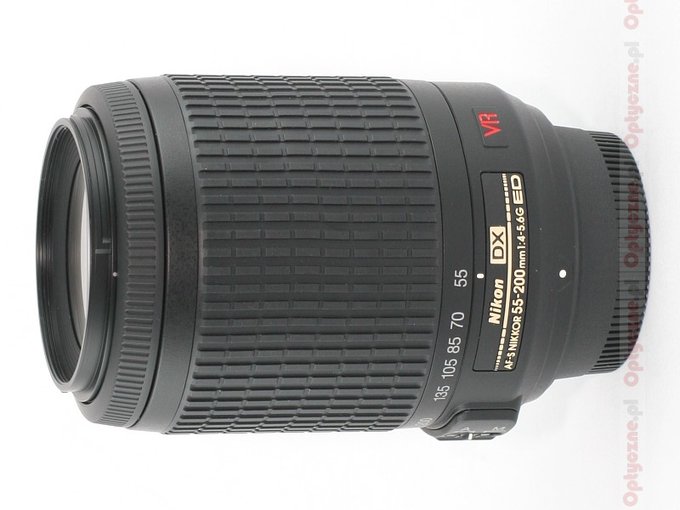Nikon Nikkor AF-S DX 55-200 mm f/4-5.6G IF-ED VR
1. Introduction
When it comes to the image stabilization the fight for customers is, so to speak, led on two fronts. Two biggest market players – Canon and Nikon – even in times of analogue photography placed a bet on lenses with optical stabilization. After introducing reflex cameras they didn’t change their tactics, they just modernized stabilization mechanisms stating that they can reach the level of 4 EV (so allow to extend the exposure time even 16 times).
Main rivals of Canon and Nikon, so companies like Olympus, Sony or Pentax, placed a bet on sensor stabilization. This solution has one indisputable advantage – you buy it with the body so it works for every lens you happen to attach to your camera. The next advantage, connected with the first, is that this solution is cheaper. It’s enough to compare the prices of Canon and Nikon lenses with and without stabilization. The differences can reach the level of 300-500 $ – and this is roughly how much we should pay additionally for stabilization in a lens.
Please Support UsIf you enjoy our reviews and articles, and you want us to continue our work please, support our website by donating through PayPal. The funds are going to be used for paying our editorial team, renting servers, and equipping our testing studio; only that way we will be able to continue providing you interesting content for free. |
- - - - - - - - - - - - - - - - - - - - - - - - - - - - - - - - - - - - - - - - - - - - - - - -
While the professionals don’t need much persuasion concerning the advantages of high quality stabilized lenses, the amateur market is a law unto itself. Amateur customers can often be tempted by a less efficient sensor stabilization (but its efficiency level might change soon – a new Olympus E-3 is going to have a sensor stabilization at the level of even 5 EV) assuming quite correctly that for amateur usage a highly efficient stabilization of very expensive, professional lenses is simply not needed. They know they won’t buy very expensive lenses as they can make do with good substitutes from Sigma, Tamron or Tokina so they will choose a body with stabilization working for every device.
Canon and Nikon seem to be aware of that problem – the fact that they have launched cheap amateur lenses equipped with inexpensive stabilization recently are the proof of it. One of these examples is exactly the Nikkor 55-200 mm f/4.0-5.6G DX AF-S VR, which, with a price of a bit over 200 $, is only 50 $ more expensive than its predecessor without stabilization. As the Nikkor 55-200 mm f/4.0-5.6G DX AF-S without stabilization was already tested by us we have a good opportunity to compare its possibilities with the stabilized cousin. Happy reading, then!
The lens was lent for the test by the Cyfrowe.pl shop.
Information about our review method can be read in our article “How do we test lenses?"







